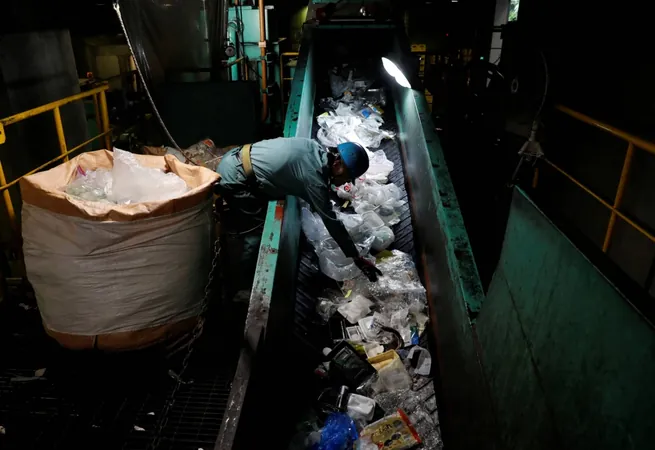
Could Microplastics Be the Hidden Enemy of Our Fertility?
2025-05-25
Author: Arjun
Shocking Discovery: Microplastics in Ovarian Follicular Fluid
In a groundbreaking revelation, Italian researchers have detected microplastic particles in the ovarian follicular fluid of women undergoing infertility treatment. This alarming study highlights the pervasive infiltration of tiny plastic particles in our bodies, previously found in sources such as hair, saliva, blood, and even breast milk.
Microplastics: The Emerging Threat to Female Fertility
Published in the journal *Ecotoxicology and Environmental Safety*, the research warns of a potential 'emerging threat to female fertility' and emphasizes the need for further investigation into how these microparticles may harm human reproduction.
A Global Infertility Crisis?
Japan, facing a declining birthrate, is not unfamiliar with infertility issues—1 in 4.4 couples sought treatment in 2021, a sharp rise from 1 in 8 in 2002. Experts speculate whether there's a troubling connection between rising infertility rates and microplastics.
Call for Action: Redefining Plastic Regulations
While researchers urge for more stringent studies before establishing concrete links between microplastics and infertility, consensus is forming around a need for both government action and public awareness on plastic use to safeguard health.
The Alarming Truth About Plastic Pollution
Plastic is woven into our daily lives, but the global production is skyrocketing—up from 225 million tons in 2004 to 414 million tons in 2023 as per Plastics Europe. Much of this waste ends up in oceans, breaking down into microplastics that permeate the environment and our food chain.
The Dangers of Endocrine-Disrupting Chemicals
Hideshige Takada, a leading expert in microplastics pollution, voices grave concerns about chemical additives in plastics. Many of these substances mimic female hormones and can disrupt the endocrine system, potentially leading to reproductive issues.
The Role of Phthalates and 'Forever Chemicals'
Phthalates and bisphenol A, widespread in plastic products, are notorious for disrupting hormonal functions, while PFAS—dubbed “forever chemicals”—are linked to severe health risks, including cancer. Current regulations provide limited protection against these chemicals, leaving a gap in safety.
Urgent Need for Better Research Standards
Despite the growing body of evidence, questions linger about the reliability of research methods in detecting microplastics. Critics point to contamination risks in labs and the need for larger, more transparent studies to determine the real health impacts.
Male Infertility: A Growing Concern
Parallel to female infertility, male fertility is also declining, yet the role of microplastics remains largely unexplored. Many environmental factors, including pollution and lifestyle choices like smoking, complicate the landscape of male reproductive health.
Rethinking Plastic Policies: Insights from Europe
As global negotiations aim for a legally binding treaty on plastic waste, Japan is urged to adopt successful European strategies that encourage reductions in plastic use through voluntary corporate commitments.
Practical Steps to Mitigate Health Risks
Experts advise separating plastic from food, suggesting alternatives like glass for storage, as plastics degrade with heat. Reducing everyday exposure to harmful chemicals is essential for minimizing long-term health risks.
The Future of Fertility: A Call to Awareness
With microplastics infiltrating every corner of our lives, it's crucial to remain vigilant about our health. As researchers unlock the mysteries of these tiny particles, the onus is on individuals and policymakers alike to rethink our relationship with plastic.


 Brasil (PT)
Brasil (PT)
 Canada (EN)
Canada (EN)
 Chile (ES)
Chile (ES)
 Česko (CS)
Česko (CS)
 대한민국 (KO)
대한민국 (KO)
 España (ES)
España (ES)
 France (FR)
France (FR)
 Hong Kong (EN)
Hong Kong (EN)
 Italia (IT)
Italia (IT)
 日本 (JA)
日本 (JA)
 Magyarország (HU)
Magyarország (HU)
 Norge (NO)
Norge (NO)
 Polska (PL)
Polska (PL)
 Schweiz (DE)
Schweiz (DE)
 Singapore (EN)
Singapore (EN)
 Sverige (SV)
Sverige (SV)
 Suomi (FI)
Suomi (FI)
 Türkiye (TR)
Türkiye (TR)
 الإمارات العربية المتحدة (AR)
الإمارات العربية المتحدة (AR)